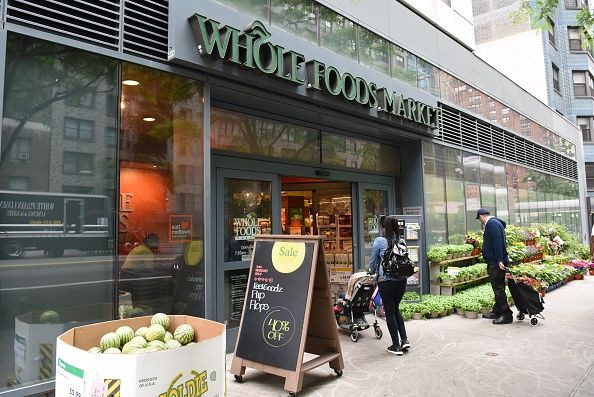Amazon Will Take The Next Step Of Whole Foods Strategy In 2019

Soon after Amazon (NASDAQ:AMZN) acquired Whole Foods Market in 2017, it started offering discounts to Amazon Prime members and selling Amazon devices in stores. In 2018, Amazon introduced free grocery delivery for Prime members at select locations and enabled online shoppers to pick up orders at their nearby Whole Foods location.
This article originally appeared in the Motley Fool.
2019 might be the year Amazon starts building new Whole Foods locations. The company is planning stores in more suburban locations in the Rocky Mountain region, according to a report from the Wall Street Journal. The stores will also be bigger than the average Whole Foods location, providing additional space for Amazon to store additional products and offer online order pickup services. That's a key synergy provided by the Amazon acquisition that could enable Whole Foods to expand to more locations.
All about Prime Now
Amazon has over 100 million Prime members around the world, but member growth has stagnated in the United States. Amazon continues to invest in benefits for its Prime members, including those offered at Whole Foods. That's enabled it to raise the price of Prime to $119 per year, which still presents great value to customers.
One benefit Amazon is working to expand is Prime Now, its two-hour delivery service for select items. It's currently available in about 60 cities.
Building out new Whole Foods locations that can double as distribution centers for Prime Now deliveries can make the expansion of Whole Foods much more economical. While Whole Foods might have been challenged to create profitable stores in more suburban locations on its own, Amazon can utilize the space to boost online sales from its marketplace as well.
Whole Foods' expansion has slowed since 2014 when it added a record 38 stores. In it 2016 annual report, management wrote, "We believe it is prudent in this challenging food retailing environment to lower our year-over-year square footage growth."
Amazon also brings a willingness to invest in less profitable areas that Whole Foods didn't have as a stand-alone company. Amazon can invest in those areas because it can gain benefits from scale and has proven capable of maximizing the value of its infrastructure (see Amazon Web Services, Fulfillment by Amazon, Prime Video, et cetera).
Bringing the competition
Whole Foods currently accounts for just 3% of the U.S. grocery market. Its footprint is relatively small compared to grocery giants like Walmart (NYSE:WMT) and Kroger (NYSE:KR). Walmart has over 4,800 locations selling groceries in the U.S. Kroger has over 2,700 grocery locations. Amazon has just 450 Whole Foods locations in the U.S.
Expanding into territories with fewer grocery options presents a major opportunity for Amazon and Whole Foods. Amazon is willing to take slim profits (or even losses) in order to take market share from its competition.
Instead of trying to compete on price with Whole Foods, however, Amazon will compete on service, offering online order pick-up and delivery for customers, putting pressure on Walmart and Kroger to continue expanding those services. Kroger is already struggling to keep up with the pressure it currently sees from Whole Foods and the rest of the industry while Walmart has made considerable price investments negatively impacting profits.
Amazon's strategy to expand Prime services by combining new Whole Foods stores with small distribution centers gives it a huge advantage over the competition when it comes to buying up real estate and opening new stores. The competition will be hard-pressed to replicate those economics, and it could show up in their profit margins as Amazon expands.
John Mackey, CEO of Whole Foods Market, an Amazon subsidiary, is a member of The Motley Fool's board of directors. Adam Levy owns shares of Amazon. The Motley Fool owns shares of and recommends Amazon. The Motley Fool has a disclosure policy.




















